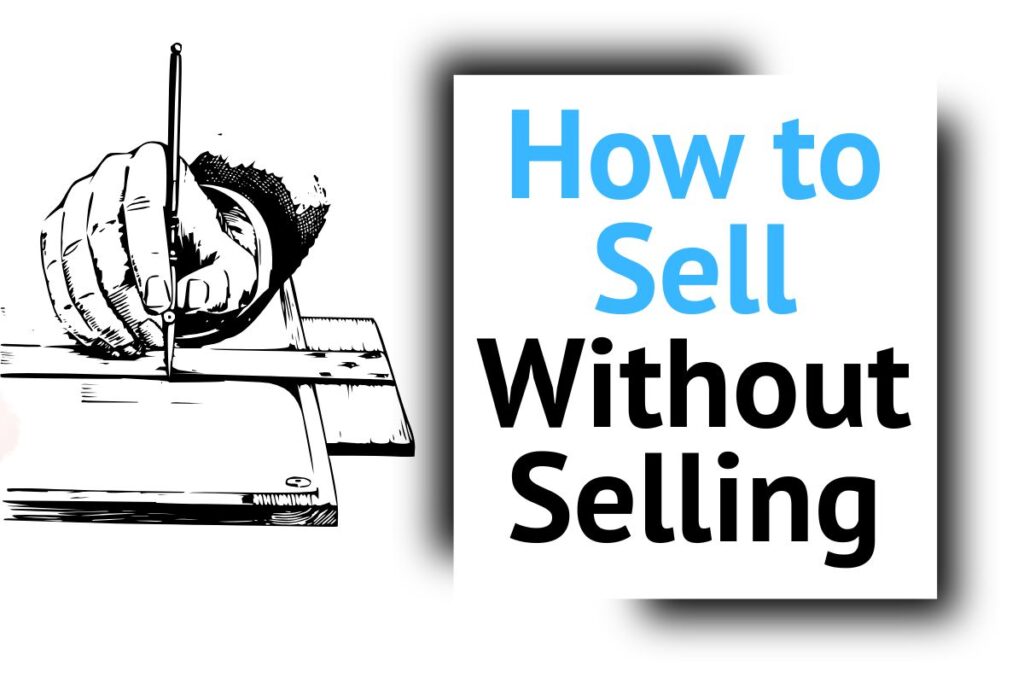
1. The New Age of Advertising
There was a time when “Buy Now,” “Hurry Up,” and “50% Off” could move the needle.
But those days are fading.
Today’s audiences don’t respond to pushy messages — they crave connection, not campaigns.
They skip, scroll, and ignore anything that feels like an ad.
However, there’s one thing people still stop for —
a story.
Stories have been part of human communication since the beginning of time.
They build trust, trigger emotion, and make brands memorable.
When used in Meta Ads, storytelling becomes the ultimate strategy to sell without selling — to turn attention into emotion and emotion into action.
“People don’t buy products; they buy feelings, values, and meaning.
Stories deliver all three.”
2. Why Storytelling Works in Meta Ads
Let’s go a little deeper into the science of storytelling.
When people consume stories, the brain releases oxytocin — a hormone linked to empathy and trust.
This means when someone watches a storytelling ad, they feel connected to the brand behind it.
And Meta’s algorithm?
It rewards engagement.
So when your story-driven ad triggers reactions, comments, or longer watch times, Meta pushes it to more people — reducing your ad cost and boosting ROI.
Here’s how storytelling changes ad performance:
| Metric | Traditional Ads | Storytelling Ads |
|---|---|---|
| Click-Through Rate (CTR) | 1–2% | 3–6% |
| Watch Time | 3–5 seconds | 10–25 seconds |
| Conversion Rate | 0.5–1% | 2–3% |
| Brand Recall | Weak | Strong & Emotional |
| Engagement | Low | 3x Higher |
When you stop pushing your offer and start telling a relatable story, your ad doesn’t just sell — it connects.
3. The “Sell Without Selling” Framework
Most brands fail on Meta Ads because they sound like they’re shouting in a crowded room.
But the brands that win?
They whisper — through stories that make people listen.
Here’s the “Sell Without Selling” framework:
- Focus on Value, Not Offer
People don’t care about your product — they care about what it does for them.
Instead of saying “Buy our skincare,” tell how someone regained confidence after years of acne. - Build Curiosity, Not Pressure
Replace “Limited Offer” with a narrative: “She tried everything for 6 years… until this changed her skin forever.” - Make the Audience the Hero
You are not the hero — your customer is.
Your brand plays the guide’s role, helping them overcome a challenge.
When you tell stories that make your audience see themselves, the sale happens naturally.
4. The Four Elements of a Great Story in Meta Ads
Every great Meta Ad story follows a structure.
Think of it as the DNA of storytelling.
| Element | What It Does | Example |
|---|---|---|
| Character | Creates connection | “Meet Sarah, a new mom balancing career and family.” |
| Conflict | Sparks curiosity | “She wanted to feel fit again but couldn’t find time for workouts.” |
| Transformation | Builds emotion | “15-minute daily workouts changed her body and mindset.” |
| Resolution / CTA | Inspires action | “Start your own journey — it’s simpler than you think.” |
Each element should flow naturally — not forced.
Keep it conversational, emotional, and visual.
Pro Tip: In storytelling ads, the goal isn’t to sell your product.
It’s to show transformation — and let your product enable it.
5. Types of Storytelling Formats for Meta Ads
Storytelling works across multiple ad formats on Meta.
Choosing the right one depends on your campaign goal and audience behavior.
| Format Type | Best For | Example Use Case |
|---|---|---|
| Short-form Video (Reels / Stories) | Awareness & Emotion | “Day in the life” of your customer or founder |
| Carousel Storytelling | Step-by-step transformation | “Before → During → After” journey |
| UGC (User-Generated Content) | Authenticity & Trust | Real customers sharing their experience |
| Founder’s Story | Brand Trust & Credibility | The origin story — “Why I started this business” |
Videos and carousels perform exceptionally well because they allow progression.
They let your audience experience the story, not just see it.
🎬 Example: A clothing brand shares a customer’s transformation from “I never felt confident” to “I love how I look now.”
The ad ends softly with, “Find your confidence today.”
6. How to Craft Your Own Meta Ad Story
Now, let’s build your storytelling ad — step by step.
Here’s a 5-step framework you can use right away:
| Step | Purpose | Example Line |
|---|---|---|
| 1️⃣ Hook | Grab attention in the first 3 seconds | “He almost quit his business — until this changed everything.” |
| 2️⃣ Relatable Moment | Make them say, “That’s me.” | “Like many freelancers, he was tired of chasing clients.” |
| 3️⃣ Emotional Turn | Build tension or curiosity | “He realized the problem wasn’t clients — it was his approach.” |
| 4️⃣ Transformation | Show your product or solution naturally | “After using Meta Ads, he scaled from 0 to 6 figures.” |
| 5️⃣ Soft CTA | Invite action, don’t push it | “Want to grow your business like this? Let’s start your story.” |
Tools to make it easier:
- ChatGPT → Write ad scripts with emotional flow.
- Canva Video Templates → Edit story-based videos in minutes.
- Meta Creative Studio → Test different storytelling angles.
Bonus Tip: Always test two story versions — one emotional, one factual — and see which gets higher engagement.
7. Real-Life Storytelling Examples That Worked
1: Fitness Brand Ad
- Storyline: A young mother shares her weight loss journey after pregnancy.
- Approach: No direct promotion — just her story and small glimpses of the app she used.
- Result: 3x higher engagement, 2.5x better conversion rate.
People didn’t see an ad; they saw themselves.
2: Local Coffee Shop
- Storyline: The founder shares how he started the café after losing his job during the pandemic.
- Approach: Emotional founder story showing hope and resilience.
- Result: Community engagement exploded — customers felt emotionally connected and proud to support him.
3: Digital Service Brand
- Storyline: A small business owner explains how a marketing agency helped her grow through Meta Ads.
- Approach: Testimonial format with a soft CTA: “Ready to write your success story?”
- Result: 40% increase in leads — purely through trust and relatability.
8. Common Storytelling Mistakes to Avoid
Even great marketers make mistakes when crafting stories.
Here are the top pitfalls — and how to avoid them:
| ❌ Mistake | ✅ Better Approach |
|---|---|
| Ad is too long or confusing | Keep it short and focused (under 30 seconds for video) |
| Story feels scripted | Use conversational tone and real-life dialogue |
| No emotional connection | Add relatable pain points and real characters |
| No CTA or weak CTA | End with a natural invitation, not a hard sell |
| All emotion, no clarity | Always connect emotion to product value |
Remember: Your story should make them feel, then think, then act.
9. Measuring Storytelling Success in Meta Ads
Once your storytelling campaigns are live, track how they perform — not just in sales, but in engagement and sentiment.
| Metric | What It Tells You |
|---|---|
| ThruPlay % | How many viewers watched till the end (story engagement) |
| CTR (Click-Through Rate) | How many people took the next step |
| Engagement Rate | How much your story resonated emotionally |
| ROAS (Return on Ad Spend) | Overall profitability of your ad |
| Comment Sentiment | Whether people are connecting positively |
👉 Pro Tip: Run A/B tests with two story variations — emotional vs. logical.
Often, the emotional narrative drives 2–3x more engagement and a higher CTR.
10. The Future of Storytelling in Meta Ads
We’re entering an era where AI handles targeting, but humans handle emotion.
As automation grows, your creative storytelling becomes the real competitive edge.
The future of advertising belongs to brands that feel human.
People don’t want to be sold to — they want to be understood.
So before launching your next Meta campaign, don’t ask:
“What product should I push?”
Ask:
“What story can I tell that moves someone?”
Because when you tell the right story:
- You attract the right audience.
- You build real relationships.
- And you convert through trust, not tactics.
Final Thoughts
Storytelling is not a marketing trick — it’s a bridge between brand and emotion.
When your ads feel like genuine stories instead of sales pitches, people don’t just click; they connect.
So next time you craft a Meta Ad, remember:
- Make your audience the hero.
- Let your product be the guide.
- And end with a soft, emotional CTA.
Because when you sell through storytelling,
you’re not just promoting a product —
you’re creating a moment people remember.
